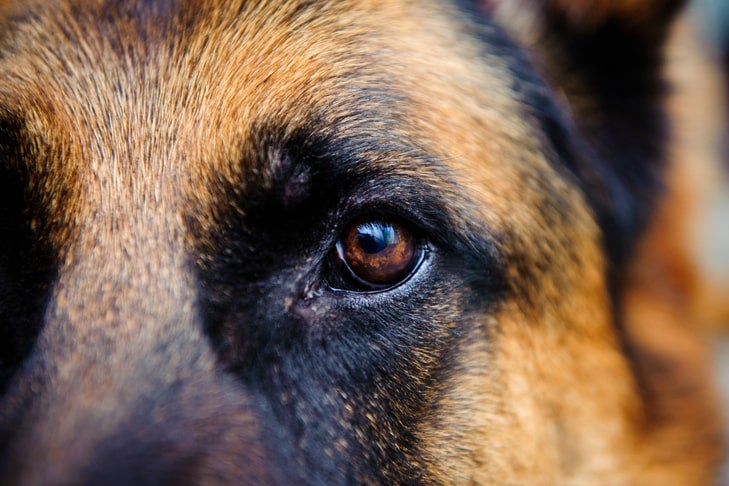Clubs Offering:
|
Have you ever felt your dog’s eyes following you, like they’re watching your every move? Maybe your dog stares at you while enjoying a chew toy or bone. Or, perhaps you enjoy sitting with your dog and gazing into each other’s eyes. Whatever the scenario, dogs spend a great deal of time staring at humans. And many dog owners spend a great deal of time wondering why.
Unfortunately, there is no simple one-stare-fits-all answer. Dogs have many reasons for turning their gaze on us. But most of the time they are either communicating with us or waiting for us to communicate with them. With a little knowledge and observation, you can learn to tell the difference. You can also teach your dog alternative ways to communicate that aren’t quite so puzzling as staring.
More than almost any other animal on earth, dogs are in tune with humans. They sense our moods, follow our pointing gestures, and read us for information about what’s going to happen next. That means they stare at us a lot to gain knowledge about their environment. Essentially, they are waiting for us to do something that will impact them. For example, dogs quickly learn that their owners pick up the leash before taking them on a walk. Therefore, they will watch for that signal that a trip outside is on its way. The same is true for mealtimes, play sessions, car rides, and so much more.
Dogs also wait for more deliberate cues from their owners. Cues to perform a specific behavior like sit or down are chances to earn a reward. Since dogs love getting a treat, toy, or game, they will keep an eye out for these opportunities. This is particularly true of dogs trained with positive reinforcement methods. These dogs learn to love training and wait eagerly for signs it’s time to play the training game.

What Happens When You Stare at a Dog
Dogs will likely move away from a threat. If they catch someone staring at them, they’ll try to disengage from the person staring. Some dogs will:
If this happens, the person unintentionally staring at the dog should turn sideways and look away from the worried dog. Intimidation teaches a dog that a person is unpredictable and scary. It’s tough learning from someone who’s intimidating, and it’s unfair to force a dog to learn this way. Remember, staring is considered rude in both the human and canine world.
The research was part of the European Research Council funded Senior Family Dog Project, aimed at aging research. The oldest dog participant was 15 years old. Credit: Eötvös Loránd University (ELTE)
“One hundred and thirty family dogs were examined at the Department of Ethology, Eötvös Loránd University. We measured the length and width of their heads because this is related to their vision,” said Zsófia Bognár, Ph.D. student, first author of the study, published in Scientific Reports. “The boxer, bulldog, pug, and snub-nosed dogs, in general, have a more pronounced area centralis in the retina, so they can better respond to stimuli in the central field, which may make it easier for them to form eye contact with humans.” Credit: Zsofia Bognar
Dogs adapted uniquely well to live with humans, and communication plays a vital role. They are sensitive to the direction of the humans gaze, which helps them decide whether a message is directed to them. Forming eye contact with the owner raises oxytocin levels in both parties, which plays a role in developing social bonding. However, individual dogs are not equally prone to make eye contact; the anatomy of the eye, the original function of the breed, i.e., the task they were bred for, age and personality might also affect the tendency to form eye contact.
More information: Zsófia Bognár et al. Shorter headed dogs, visually cooperative breeds, younger and playful dogs form eye contact faster with an unfamiliar human, Scientific Reports (2021). DOI: 10.1038/s41598-021-88702-w
Use this form if you have come across a typo, inaccuracy or would like to send an edit request for the content on this page. For general inquiries, please use our contact form. For general feedback, use the public comments section below (please adhere to guidelines).
Why Is Your Dog Looking At You?
With so many opinions and misinformation about dog eye contact, it’s understandable why people wonder what eye contact means to a dog. Eye contact happens naturally; it’s part of normal body language. However, staring is considered rude and it’s scary to most dogs. Learn the difference between making eye contact with and staring at your dog, and how your dog perceives both.